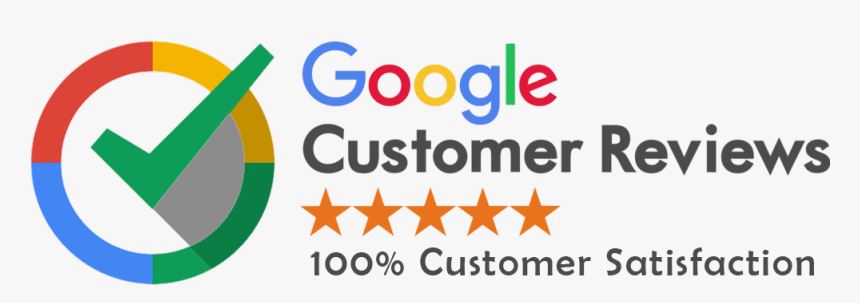Creating a website for a nonprofit is not just about having an online presence. It’s about using your platform to connect with supporters, share your mission, and encourage real-world action. For many nonprofits, the website is often the first point of contact with potential donors, volunteers, and community members. That’s why designing it thoughtfully can make a huge difference in outreach and engagement.

Here are four essential keys that every nonprofit organization must know to create a successful and effective website.
Share Your Message with Strong Content
Your content is the voice of your nonprofit. People visiting your website are not just looking for contact details or a board member list. They want to understand what you stand for, what you’ve done, and why your mission matters.
Key Elements to Focus On:
- Mission Statement: Write a short and clear mission statement on your homepage. This helps users instantly know what your nonprofit is about.
- Storytelling: Share stories of real people, communities, or animals your organization has helped. Photos, short videos, and real-life outcomes create emotional connections.
- Consistency Across Pages: Whether it’s your ‘About Us’ page, blog posts, or project updates — keep your messaging consistent with your goals and values.
Example:
A nonprofit working for child education can tell the story of one student whose life changed after receiving support. Add their image (with permission), a short quote, and the before/after journey. It helps visitors feel the impact more deeply.
Help People Help You
Many nonprofits hesitate to ask for help directly. But if your website doesn’t guide people on how they can support you, they might never take action. The goal is to encourage involvement without sounding forceful.
How to Do It:
- Donation Appeals: Be clear about how donations are used. Instead of saying “Support Us,” say “Your $10 gives one child school supplies for a year.”
- Visual Tools: Use infographics or flowcharts to show how money or support moves through your organization — from the donor to the end result.
- Call to Action (CTA) Buttons: Prominent buttons that say “Donate Now,” “Volunteer Today,” or “Get Involved” can lead to higher engagement.
Tip:
Position your CTAs near emotional content. For example, right after a powerful story, include a “See How You Can Help” button.
Prioritize Trust and Transparency
Trust is the foundation of any successful nonprofit. Visitors need to feel safe when they donate or offer their time. Your website should reassure them that their support will be used wisely.
Build Trust By:
- Financial Transparency: Publish a clear breakdown of how funds are used. You can include pie charts or bar graphs showing percentages spent on projects, salaries, admin costs, etc.
- Annual Reports: Make past reports or audit documents available for download. Even a simple PDF summary builds credibility.
- Impact Metrics: Show how many people or animals you’ve helped, events organized, or supplies distributed.
Bonus Tip:
Include testimonials from donors, beneficiaries, or partners to support your claims. Real quotes go a long way.
Design for Engagement and Easy Access
A beautiful design is useless if people can’t find what they’re looking for. Nonprofits must focus on usability and accessibility — the easier it is to use your site, the more likely people will support your mission.
What Makes a Site User-Friendly:
- Simple Navigation: Organize your menus so people can easily find information — About, Donate, Events, Contact, and Programs should be visible and simple.
- Mobile-Friendly Design: Many users browse from smartphones. If your website doesn’t adjust to screen size, you may lose them.
- Accessibility Features: Add alt text to images, readable fonts, good color contrast, and headings that screen readers can use.
Engage Through Interaction and Community Building
Your nonprofit website isn’t just for displaying info. It should be a space where visitors can feel like part of a community.
Ideas to Encourage Interaction:
- Newsletter Signup: Place an email form on every page footer or sidebar. Let visitors know what they’ll receive — such as updates, stories, or event invites.
- Social Media Feeds: Integrate real-time Facebook, Instagram, or Twitter posts to show you’re active.
- Interactive Tools: Polls, quizzes, or comment boxes can make users feel involved. You can even include a “Wall of Support” showing recent donations or shout-outs.
Use SEO and Content Optimization
Even the best-designed website won’t help if no one finds it. Nonprofits can benefit greatly from basic search engine optimization (SEO).
SEO Tips for Nonprofits:
- Use Relevant Keywords: Think about what people might search — “animal rescue UAE” or “free education charity Dubai.”
- Image Optimization: Add alt text that describes each image. This helps search engines understand what your page is about.
- Meta Titles and Descriptions: These are the headlines people see on Google. Make them clear, short, and include your nonprofit’s name.
Keep It Secure and Professional
Visitors are more likely to donate when they feel safe. Security and professionalism are not optional.
Make Sure To:
- Use SSL (https://): Always secure your site with an SSL certificate. It protects visitor data and builds trust.
- Secure Payment Gateway: Use trusted payment platforms like Stripe or PayPal.
- No Broken Links or Errors: Regularly check your site for missing pages or old info. It shows you care about your online presence.
Provide Options for Language and Culture
If your nonprofit serves multiple communities, language support is critical.
Why It Matters:
- Multilingual Pages: Offer translation options for common languages spoken in your target areas.
- Cultural Imagery and Content: Use inclusive images and examples that reflect your diverse supporters.
Focus on Speed and Load Time
A slow website frustrates users and increases bounce rates.
Fixes Include:
- Compress images before uploading
- Use fewer animations or large video files
- Choose a reliable hosting provider with fast servers
Maintain and Improve Your Website Continuously
A nonprofit website should never feel outdated. Constant updates signal that your organization is active and credible.
How to Keep It Fresh:
- Monthly Blog or News Update: Highlight a story, event, or campaign.
- Update Photos Frequently: Replace old images to show current activities.
- Add New Testimonials: Ask new volunteers or donors to share their experiences.
Use Real Examples to Inspire
People love to learn from others. Add a section called “Success Stories” where you talk about milestones or community heroes.
Example Layout:
- Title: “How A Small Donation Changed A Life”
- Image of the beneficiary
- A few emotional lines about their journey
- A quote from them or their family
- A link saying “Support someone like Ali – Donate now”
Include a Volunteer Section with Proper Details
Not everyone can donate money, but many can give their time.
What to Include:
- FAQ section about volunteering
- Event calendar for upcoming opportunities
- Volunteer registration form
- Photos or testimonials from current volunteers
Final Thoughts
A well-designed nonprofit website is more than just nice visuals — it’s your biggest digital tool for connection, trust, and action. Each click, scroll, and signup is a step toward change. By applying these 4 (plus bonus) keys — strong messaging, clear calls to action, transparency, and accessible design — you can build a site that inspires people to engage and contribute.
Remember: your website is not just a donation box — it’s a window into the heart of your mission.


